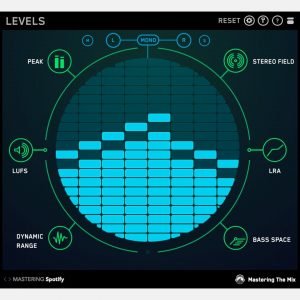What are Levels? #AudioTalk

What are Levels?
The easiest way to capture sound is by converting sound energy into electrical energy. There have been attempts to capture sound on wax cylinders but the quality and volume that was achieved weren’t great for anything other than speech. Then they moved onto circular lacquer disk which evolved into the vinyl disk we know and love. Then came the era of Tape Machines, the best way to record music in my opinion, I digress. The microphone facilitated the recording of audio for the longest time. And the output from the microphone was very minute electrical signals and, with the standardization of dBV during the development of the industry, was measured to be between -60dBu to -40dBu(Decibel measurement concerning voltage).
How did they come up with levels?
CBS, NBC and Bell Labs developed the VU meter in 1939 to visually exhibit the perceived loudness of the audio signal. The Acoustical Society of America then standardized it in 1942(ANSI C16.5-1942). 0 VU is equal to +4 dBu, or 1.228 volts RMS, a power of about 2.5 milliwatts when applied across a 600-ohm load. 0 VU is often referred to as “0 dB”. The meter was designed not to measure the signal, but to let users aim the signal level to a target level of 0 VU (sometimes labeled 100%), so the device doesn’t have to be non-linear and imprecise for low levels.
In effect, the scale ranges from −20 VU to +3 VU, with −3 VU right in the middle. Purely electronic devices may emulate the response of the needle; they are VU-meters in as much as they respect the standard.

The Different Levels :
There are three fundamental levels. Mic Level, Line Level, and Speaker Level. There’s also an instrument level, these levels are given off from guitars, basses, pick-ups from instruments. They usually lie between mic and line levels. That’s why it’s recommended to send guitar lines through a DI Box(Direct Injection Box). The Preamps bring up a Mic level signal to Line level signal, boosting the signal to an audible level for us and the machine to recognize. It’s always safe to put lines from instruments especially from keyboards and actively pickup-ed instruments. The preamp doesn’t know if the signal is a mic or line level and thus sending a line level into a preamp will cause your speakers and/or other hardware components to get damaged.
Looking at numbers for you analytical beings, the mic level is a signal with the rating -60 to -40 dBu. The Line level for Professional audio is +4dBu but for consumer rating its -10dBu. So, instrument levels are seen to be inconsistently between these two extremes. Speaker levels are measured in dBW i.e loudness level with respect to Watts! So, changing the Unit from Volts to Watt should be enough to let you know that these levels shouldn’t be put directly into any piece of equipment other than a speaker or else you will damage your hardware and possibly even your self. Here is a good plugin to monitor your levels
The DI Box
The DI Box or the Direct Injection Box is either a passively or actively powered piece of gear that brings down a line-level or an instrument level down to mic level which then can be put into a preamp for proper gain-staging. It is always good to run any instrument out through a DI Box first then through a preamp to keep your equipment safe and long-lasting.

